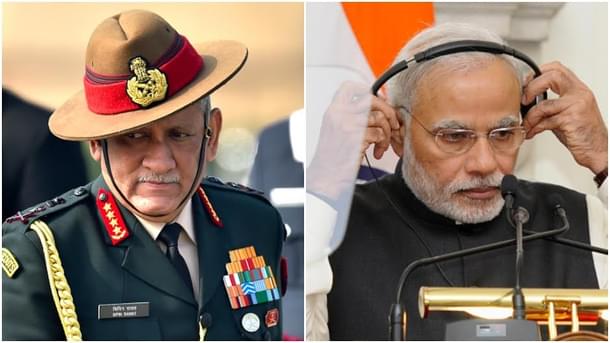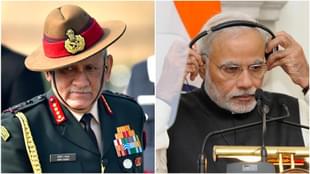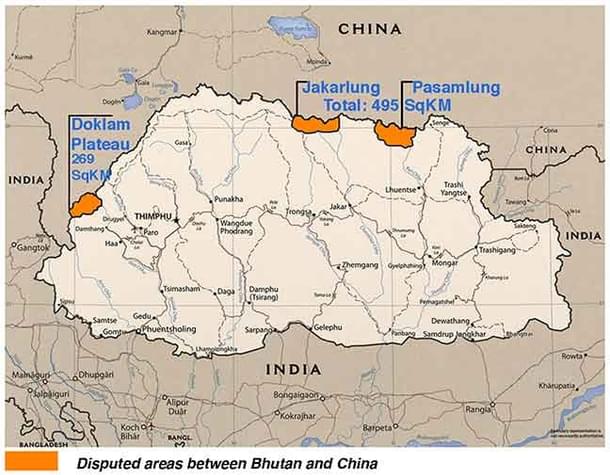Defence
Doklam Stand-Off: India Has Displayed Force Responsibly, Now It’s Time For Diplomacy
Nitin A. Gokhale
Jul 03, 2017, 02:35 PM | Updated 02:35 PM IST
Save & read from anywhere!
Bookmark stories for easy access on any device or the Swarajya app.


As the military standoff over Doka La (or Doklam plateau) between India and China spills over into its second month, it is important to understand both the military and geo-strategic reasons behind the incident.
Technically the Doklam plateau is Bhutanese territory but New Delhi, as Bhutan’s closest friend in the region, has an obligation to stand up for Thimphu against the aggressive posturing by China, notwithstanding the subtle change in the language of an updated treaty signed in 2007 at the advent of Parliamentary democracy in Bhutan.
Article 2 in the earlier treaty, clinched in 1949 had said: “The Government of India undertakes to exercise no interference in the internal administration of Bhutan. On its part the Government of Bhutan agrees to be guided by the advice of the Government of India in regard to its external relations (emphasis added).”
This clause was amended in 2007 to read: “In keeping with the abiding ties of close friendship and cooperation between Bhutan and India, the Government of the Kingdom of Bhutan and the Government of the Republic of India shall cooperate closely with each other on issues relating to their national interests. Neither Government shall allow the use of its territory for activities harmful to the national security and interest of the other (emphasis mine).”
However Article 1 has remained constant. It reads in both treaties: “There shall be perpetual peace and friendship between India and Bhutan.” India, thus does have an obligation to defend Bhutan from any aggression.

China, in keeping with its policy of creeping advancement against smaller neighbours, has been pressuring Bhutan to settle the boundary dispute between the two. The boundary dispute exists in three pockets (see map) but for China, the one at tri-junction, is military, the most vital.
The Chinese want to gain control of the Doklam plateau for tactical military reasons by building a road into the Doklam plateau. The PLA has been trying to build a road up to Gyemochen, which is towards the lower end of the tri-junction. China claims Gyemochen is the tri-junction between India, China (Tibet) and Bhutan whereas Survey of India maps of 1956 show Batang La, north of Gyemochen, as the tri-junction. The Batalang tri-junction at the narrow end of the Chumbi Valley — wedged between East Sikkim and West Bhutan — leaves China very little depth or width to deploy its forces.
The border, as it stands today between both India and China and between China and Bhutan, affords India a tactical advantage since its forces based in North and North-east Sikkim can easily cut off the Chinese deployment in the narrow Chumbi Valley should China try any misadventure here.
The Kalimpong headquartered 27 Division can easily employ mechanised forces in north and north-east Sikkim and press home the advantage against the Chinese in the Chumbi Valley (towards the town of Yadong or Yatung in Tibet), the Gangtok-based 17 Division is well-poised to take care of any Chinese deployment from east Sikkim.
These formations have their tasks clearly defined to cut off Chinese forces by deploying rapidly from North, north-east and east Sikkim towards Bhutan. The Chinese forces in the narrow Chumbi Valley are currently in the line of sight and fire of Indian forces poised on the ridges along the Sikkim-Tibet border.
Aware of this vulnerability, the Chinese have been eyeing the Doklam plateau since any troops stationed there will be away from visible observation and beyond artillery range of Indian forces either based in North or north-east Sikkim. Moreover, once the Chinese gain control of the plateau, they can easily roll down the Zimplri ridge and undermine Indian defences in the Siliguri Corridor that connects rest of India to the seven north-eastern states. That is why India has kept a close watch on Chinese activities around the Doklam plateau since it has anticipated the possibility of the Chinese attempting to get behind Indian defences through Bhutan.
The Chinese did try to alter the ground reality once in 2008 but were unsuccessful. This time, the standoff began in late May and peaked on 5-6 June when Indian troops, alerted by their Bhutanese counterparts, blocked the Chinese construction party from extending the road into the Doklam plateau.
Tactical military compulsion apart, there is a geostrategic reason why China chose to up the ante. That Beijing made its first public statement on the standoff at a time when Prime Minister Narendra Modi was in the US for his first meeting with President Donald Trump clearly shows China’s annoyance with India’s perceived tilt towards the US. Peeved with India’s refusal to join the Belt and Road Initiative, Beijing chose to make a series of aggressive statements against India including one that sought to remind India of the 1962 war between the two, which India lost. The remark on 1962 received a riposte from India’s Defence Minister Arun Jaitley that ‘2017 is not 1962.’
Indeed, 55 years after the 1962 war, one can confidently say that the Indian Army has firmly and exorcised the ghost of 1962, thanks to a deeper understanding of the Chinese psyche and decisive victories in two major military face offs since then — one in 1967 and the other in 1987. In fact, the standoff at Nathula, not very far from the current impasse in 1967, gave the Chinese a bloody nose, just five years after 1962. The other eyeball to eyeball confrontation at Sumdorong Chu in Arunachal Pradesh, exactly 30 years ago too forced the Chinese to back down from its creeping encroachment.
There are a few firsts in the current stalemate. For once China is projecting itself as the aggrieved party. Two, Beijing has retaliated by cancelling the Mansarovar Yatra through Nathu La, one of the more easily implementable confidence building measures. Three, China has called India to withdraw its troops from what it calls Chinese territory for any further talks to commence.
A far more assured and confident India reacted to the barrage of intemperate statements by China with a measured statement and offered Beijing a way out. The statement said in conclusion: “India has consistently taken a positive approach to the settlement of its own boundary with China, along with the associated issue of the tri-junctions.
“India cherishes peace and tranquillity in the India-China border areas. It has not come easily. Both sides have worked hard to establish institutional framework to discuss all issues to ensure peace and tranquillity in the India-China border areas. India is committed to working with China to find peaceful resolution of all issues in the border areas through dialogue.”
The belligerence displayed by some of India’s military veterans from the safety of TV studios notwithstanding, both New Delhi and Beijing have the wisdom and sagacity to resolve the latest dispute calmly. By standing firm and helping a weaker friend militarily, India has displayed its resolve. Now it’s time to get down to some deft diplomacy.
This article was originally published in Bharat Shakti and has been republished here with permission.
An authoritative defence analyst, media trainer and a multi-media reporter who started his career in 1983, Gokhale has worked across web, print and broadcast mediums over the last three decades. He has a rare distinction of living and reporting from India’s North-eastern region for 23 years.





